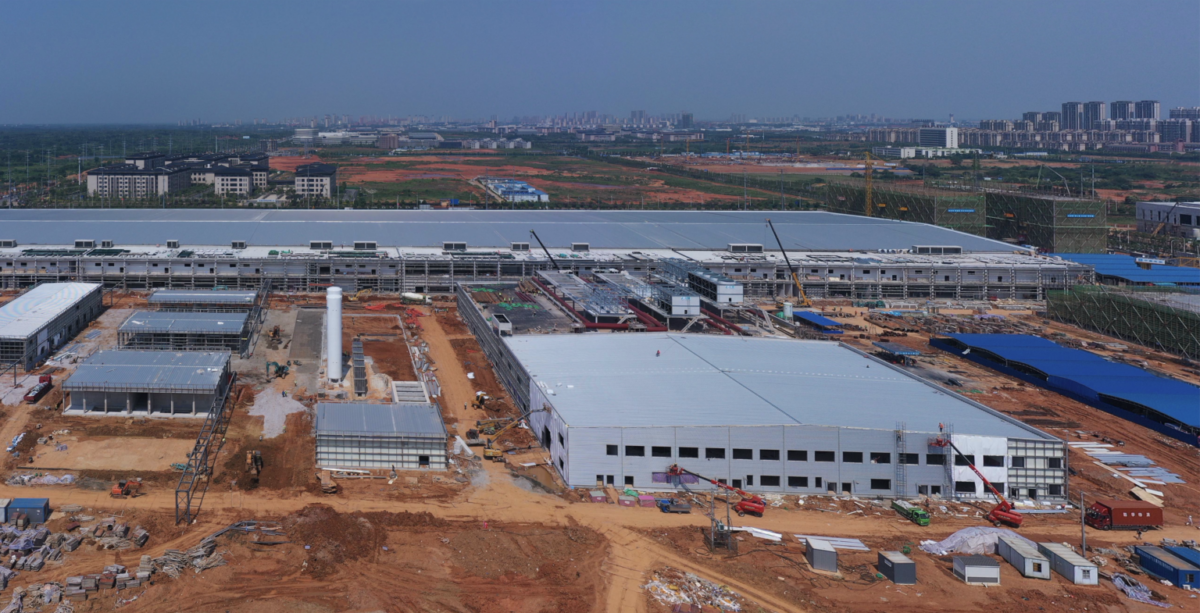GCL SI has introduced a novel carbon-tracing mechanism featuring a blockchain and QR code system. The vertically integrated manufacturer said it will use the “carbon chain” to transparently trace its carbon footprint across its entire supply chain.
Every module will get a QR code revealing the carbon emissions of each production step. GCL SI said it aims to achieve full transparency of its carbon contents from the procurement, production, and transportation of its products. It said that the combination of blockchain and QR codes will provide complete transparency and high safety, so data cannot be tampered with.
The aim is to trace carbon emissions in each production step. That includes the production of metallurgical polysilicon, over to fluidized bed reactor (FBR) polysilicon refinement, the ingot-to-wafer-to-cell production steps, and eventually, PV module assembly. GCL SI said that it will ask third-party auditors to certify the carbon emissions of each of these six steps individually. The reports from each production step will be combined into a single file accessible via a QR code on the modules.
The company started tracking its carbon footprint in 2019 to comply with French market rules. PV products designed for systems larger than 100 kW in France must receive a French Energy Regulation Commission (CRE) carbon footprint certification. GCL SI enlisted certification service provider Certisolis to inspect its module production processes.
In addition, the company has selected certification bodies Ademe and CQC to certify the carbon footprint of GCL SI processes related to raw materials. With the system in place, the company complies with the PAS205:2011 standard, which regulates environmental assessments of products.
But now it is time to step up the effort again, said GCL SI Executive President Thomas Zhang.
Popular content
“The carbon chain concept leverages cutting-edge blockchain technology and strategic partnerships to create a seamless and transparent carbon platform,” said Zhang. “It is a testament to our unwavering commitment to sustainability and corporate responsibility. By embracing this pioneering practice, we reduce our carbon footprint and empower others to do the same.”
Between 2021 and 2023, GCL SI agreed to decrease the carbon intensity of its products by 70%, Zhang said. This has been achieved by implementing various optimization techniques, such as heat insulation, air conditioning, and on-site PV generation, to power the production processes.
pv magazine print edition
The March edition of pv magazine is dedicated to energy storage and considers sodium-ion’s chances of toppling lithium-ion, takes a look at compressed air technology, and asks whether big or small is the best approach for African solar and storage.
The company also switched from using the traditional Siemens method to using granular polysilicon made by FBR technology. The latter technology, Zhang said, saves 80% more carbon emissions than Siemens-methods polysilicon. The GCL Group has 420,000 tons of FBR silicon production capacity and plans to expand further.
The decision to introduce a carbon chain system to trace carbon emissions in a more detailed way along the supply chain was made to more effectively comply with French market rules and prepare GCL SI for what the solar industry might face once the European CBAM goes into force for solar modules. Zhang said that the development will be helpful when CBAM rules might also be applied to solar products in the foreseeable future. The module manufacturer traces the carbon content in its modules.
This content is protected by copyright and may not be reused. If you want to cooperate with us and would like to reuse some of our content, please contact: editors@pv-magazine.com.



1 comment
By submitting this form you agree to pv magazine using your data for the purposes of publishing your comment.
Your personal data will only be disclosed or otherwise transmitted to third parties for the purposes of spam filtering or if this is necessary for technical maintenance of the website. Any other transfer to third parties will not take place unless this is justified on the basis of applicable data protection regulations or if pv magazine is legally obliged to do so.
You may revoke this consent at any time with effect for the future, in which case your personal data will be deleted immediately. Otherwise, your data will be deleted if pv magazine has processed your request or the purpose of data storage is fulfilled.
Further information on data privacy can be found in our Data Protection Policy.